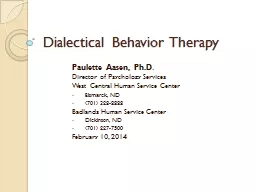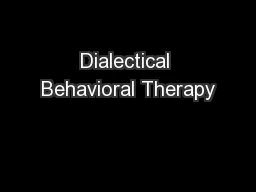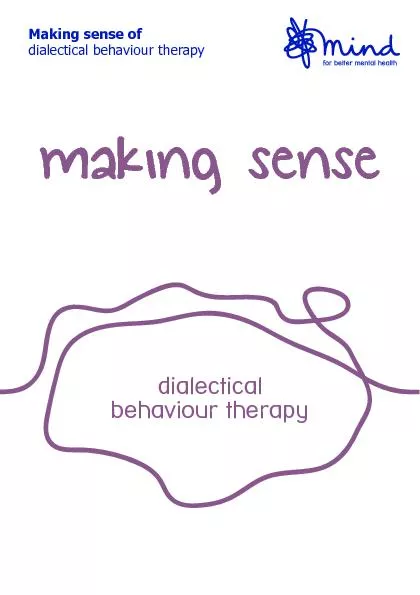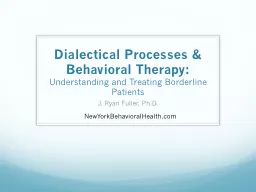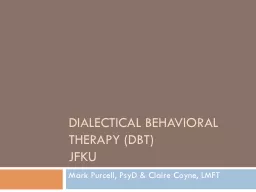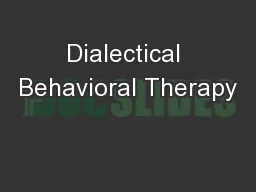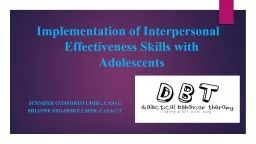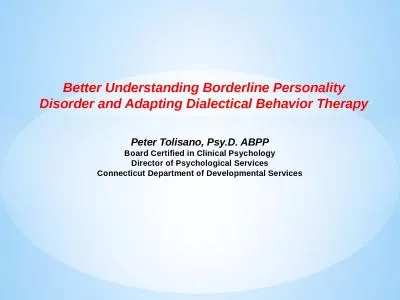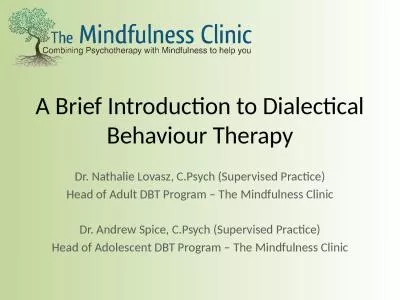PPT-Dialectical Behavior Therapy
Author : myesha-ticknor | Published Date : 2016-03-21
Paulette Aasen PhD Director of Psychology Services West Central Human Service Center Bismarck ND 701 3288888 Badlands Human Service Center Dickinson ND 701 2277500
Presentation Embed Code
Download Presentation
Download Presentation The PPT/PDF document "Dialectical Behavior Therapy" is the property of its rightful owner. Permission is granted to download and print the materials on this website for personal, non-commercial use only, and to display it on your personal computer provided you do not modify the materials and that you retain all copyright notices contained in the materials. By downloading content from our website, you accept the terms of this agreement.
Dialectical Behavior Therapy: Transcript
Download Rules Of Document
"Dialectical Behavior Therapy"The content belongs to its owner. You may download and print it for personal use, without modification, and keep all copyright notices. By downloading, you agree to these terms.
Related Documents

